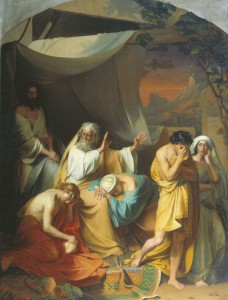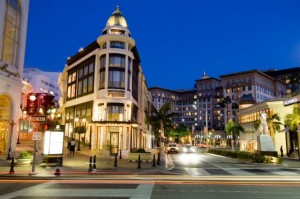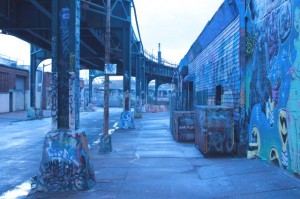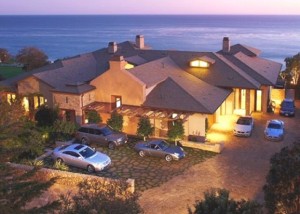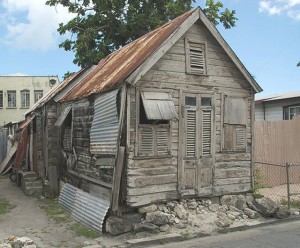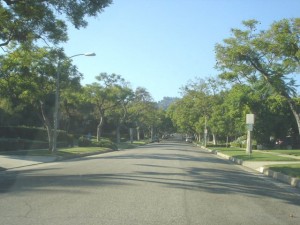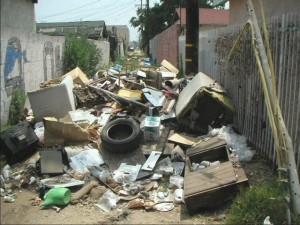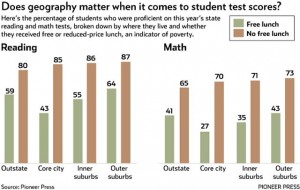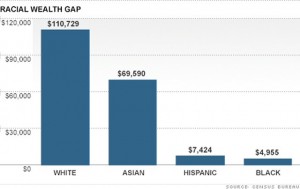“The first man who, having fenced in a piece of land, said “This is mine,” and found people naïve enough to believe him, that man was the true founder of civil society. From how many crimes, wars, and murders, from how many horrors and misfortunes might not any one have saved mankind, by pulling up the stakes, or filling up the ditch, and crying to his fellows: Beware of listening to this impostor; you are undone if you once forget that the fruits of the earth belong to us all, and the earth itself to nobody.”
— Jean-Jacques Rousseau, Discourse on Inequality, 1754
Background
The Bible recounts how, after the Great Flood, Noah reintroduced slavery –the ultimate degree of poverty- with his son, no less. It also states that the source of poverty is God, not man. Thus, being of divine origin, poverty is necessarily ancient, widespread and pervasive. However, in deference to free will, rulers and judges have the authority –and bear the responsibility- for protecting the meek and the powerless. It is up to them to codify the rights of the poor and define the boundaries and degrees of poverty. But the degree to which it afflicts a society is determined by the ideology and policies of its rulers. Measured by that yardstick, all societies without exception have failed miserably, for even in peacetime deaths directly attributable to poverty dwarf all other catastrophes and wars combined. For millions in that predicament, death is literally a step up, a ticket to paradise. And always, poverty is a menace to peace.
The Poverty Line
In 1969 the U.S. government adopted the “poverty line” as the official poverty determinant. Mollie Orshansky, an economist at the Social Security Administration, developed tiers for different sizes of families based on an economy food plan developed by the Department of Agriculture for low-income families. Using 1963 as the base year, she concluded that a family of two adults and two children spent about $1,033 for food. On the basis the 1955 USDA survey, Orshansky determined that “typical” families spent one-third of their after-tax income on food. She then multiplied that figure by 3 to arrive at $3,100 as the minimum yearly income that family needed to survive, which became the poverty line for a family of 4. Any family with an income of less than that was poor.
The line is readjusted annually to factor inflation. For 2014 it is $11,670 for one person; for four it is $23,850. There are of course many things wrong with this arbitrary concept. For example, a man making say, $11,900, is he not poor? If he is, at what point in the income ladder does he cease to be? And if he is poor even though his income exceeds the poverty line’s maximum, by what rationale should he be excluded from the safety net?
Poverty is in fact not rigid, with some in one zone and the rest in another. It is a condition of gradual, imperceptible change, like the colors of a rainbow, and it should be measured accordingly. A fixed line is used because it is convenient for decision makers for administrative and political reasons, not because it truthfully measures the quality of life people can afford to have. Quality of life, after all, is what counts. A more realistic definition of poverty might be to include in it all debtors who do not have enough liquid assets to retire their debt. Within that group, the debt they owe relative to their income and number of dependents would define the rung of poverty they belong to. Of course, that would be bad news for our elected representatives, for well over 70% of us are net debtors.
The System
In modern capitalism the distribution of wealth, income and earnings is of no consequence. There is no concept of fairness other than that those who produce are compensated by the market, and those who do not are not because they have not earned the right. The reasons for lack of productivity are irrelevant, and it lacks a built-in mechanism to analyze or even consider any related social and/or political consequences. This dark characteristic conveniently rejects by omission the postulate that life’s basic needs are a human right regardless of occupation, ability or desire to pursue the accumulation of unlimited wealth as life’s goal. Instead, it rewards those who do have that ability or inclination with disproportionate power to chart a society’s course by denying the same opportunity to all others.
Today the gap in the distribution of income and wealth in the United States has reverted to what it was just before the Great Depression.
Data from the United States Federal Reserve Survey of Consumer Finances show that the top 1 percent of households has more wealth than the entire bottom 95 percent. They have nearly half of all financial wealth (net worth minus net equity in owner-occupied housing). The top 1/2 percent of households has 42 percent of the financial wealth. The higher one goes up the income scale, the greater the rate of capital accumulation. Not only has the top 20 percent grown more affluent compared with everyone below, the top 5 percent has grown richer compared with the next 15 percent. The top one percent has become richer compared with the next 4 percent. And the top 0.25 percent has grown richer than the next 0.75 percent. That top 0.25 owns more wealth than the other 99 percent combined.
This is unacceptable, and not just on moral grounds. In the past, a theoretically egalitarian democracy has been coupled with a functionally non-egalitarian capitalism on the assumption that government would do three things.
Firstly, a guarantee that first-class education and skills would be available to children of parents who did not have first-class income and wealth; the next generation would be better skilled and able to earn more than the previous. Secondly, government would insure that those who cannot compete for whatever reason do not perish economically. Thirdly, it would use the tax system to make after-tax distributions of income and wealth more equal than before-tax distributions of income and wealth. But the system is contradictory and has failed with respect to purpose and result. How does one put together a democracy based on the concept of equality while running an economy with ever greater degrees of economic inequality? At some point, those who are losing economically must use their potential to usher in a government that reverses the trend. Perhaps a society could move much farther along the path of inequality, perhaps not. No one knows where the breaking point is or the consequences that would follow if it is reached.
Ethnic/Racial Facts
The wealth gap between white families and blacks and Hispanics is enormous, and increasing.
Although the income gap between blacks and whites is getting smaller, there is a dime of wealth in the average black household for every dollar of wealth in every white household. Special observations about Hispanics are in order. They can be of any race; that tends to distort totals that, for reasons of convenience, government and private statisticians have traditionally merged. It is far easier for non-Hispanics to lump all “Latinos” together on the basis of region of origin or language rather than on the basis of the ethnicity of each individual. But according to a study by the Pew Hispanic Center, Latinos who call themselves white and those who say they are “some other race” have distinctly different characteristics. Among those identified as ethnically Hispanic on the 2000 census, 48 percent were counted as white, two percent black and a small fraction American Indian, Asian and Pacific Islander. Only 6 percent described themselves as being of two or more races. The rest marked “some other race.” Hispanics who identified themselves as white have higher levels of education and income and greater degrees of civic enfranchisement than those who picked the “some other race” category. More foreign-born Latinos and fewer U.S. citizens say they are of “some other race.” This pattern reflects traditional conditions in their native countries, where the descendants of Europeans, although fewer in number, own a far greater share of wealth and enjoy greater social and business recognition and acceptability than persons of Amerindian, black, Asian, or mixed ancestry. This is true even in countries where Amerindians or mixed blood are the majority.
A Clear and Present Danger (pdf link)
Just hours after Yale professor Robert Shiller had won the Nobel prize for economics he said: “The most important problem that we are facing today…is rising inequality in the United States and elsewhere in the world.” Indeed, of all the advanced economies, the U.S. is the most unequal, and where it is growing at the fastest rate. The annual income of the typical American household has fallen 9% since 1999, according to a recent report from the Census Bureau. Much of the decline was due to the Great Recession; since the recession ended in 2009 incomes for all Americans except the top 1% have hardly changed. Incomes grew by only 4% for the bottom 99% but surged by more than 31% for the top 1%. And last year the top 1% accounted for 22% of the nation’s income; the top 0.1% took home half of that.
